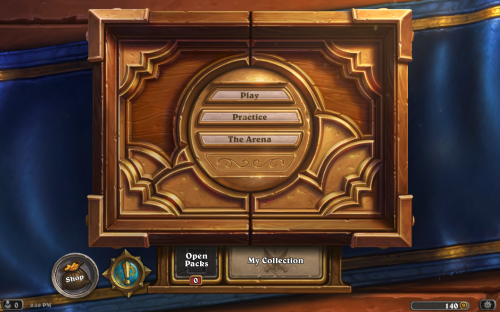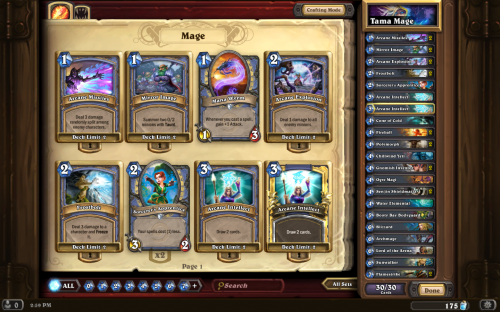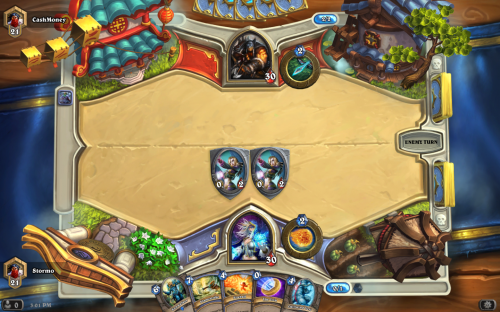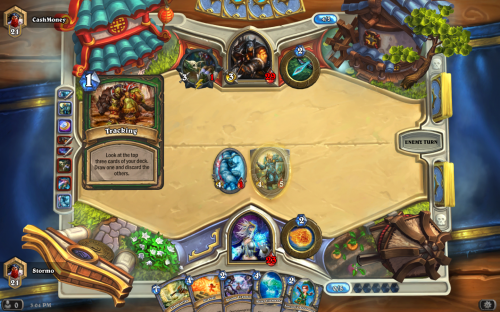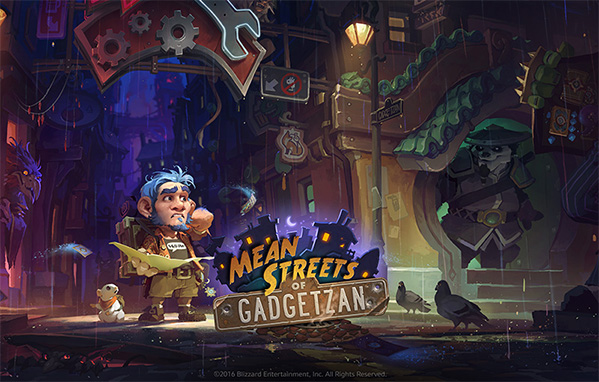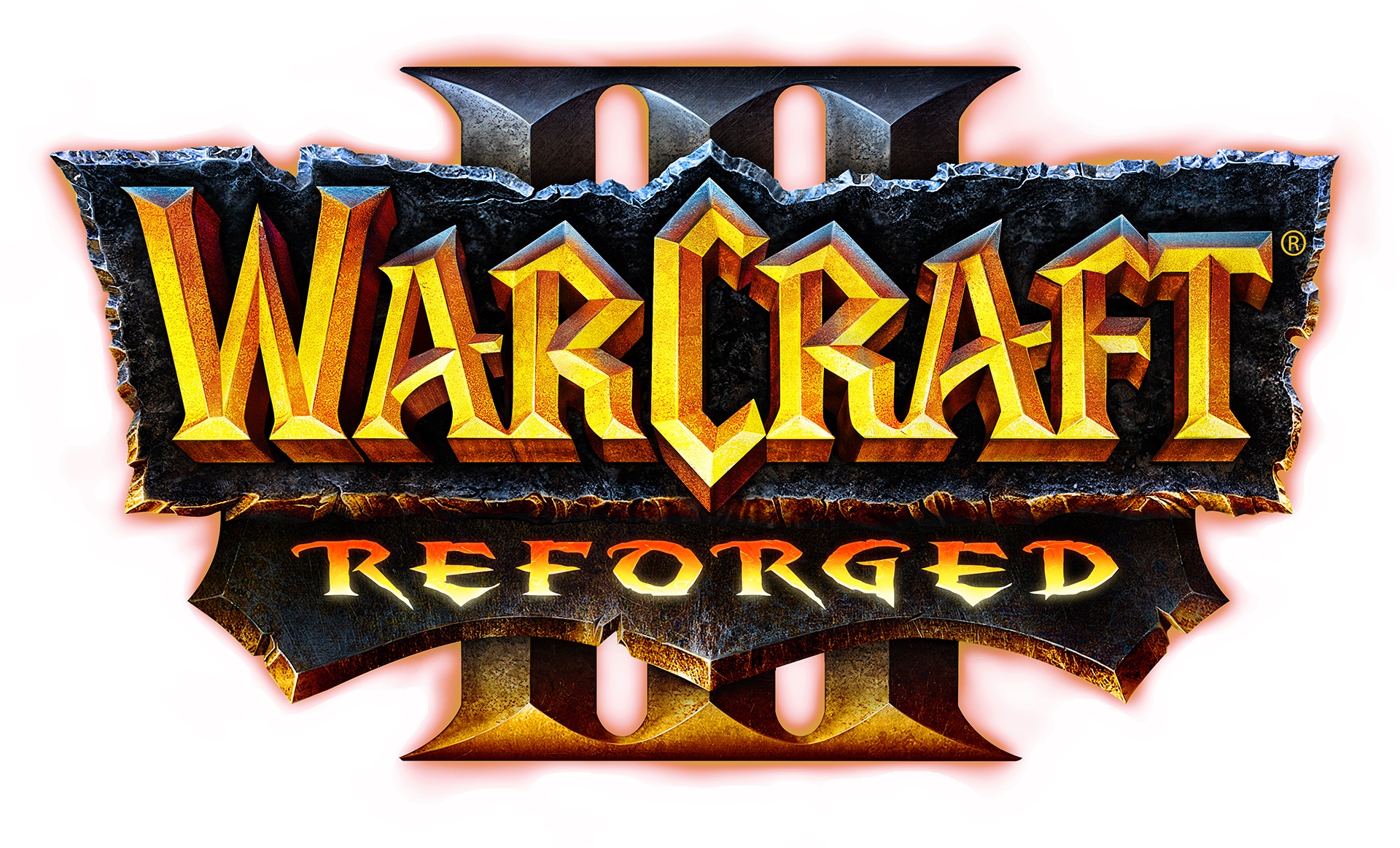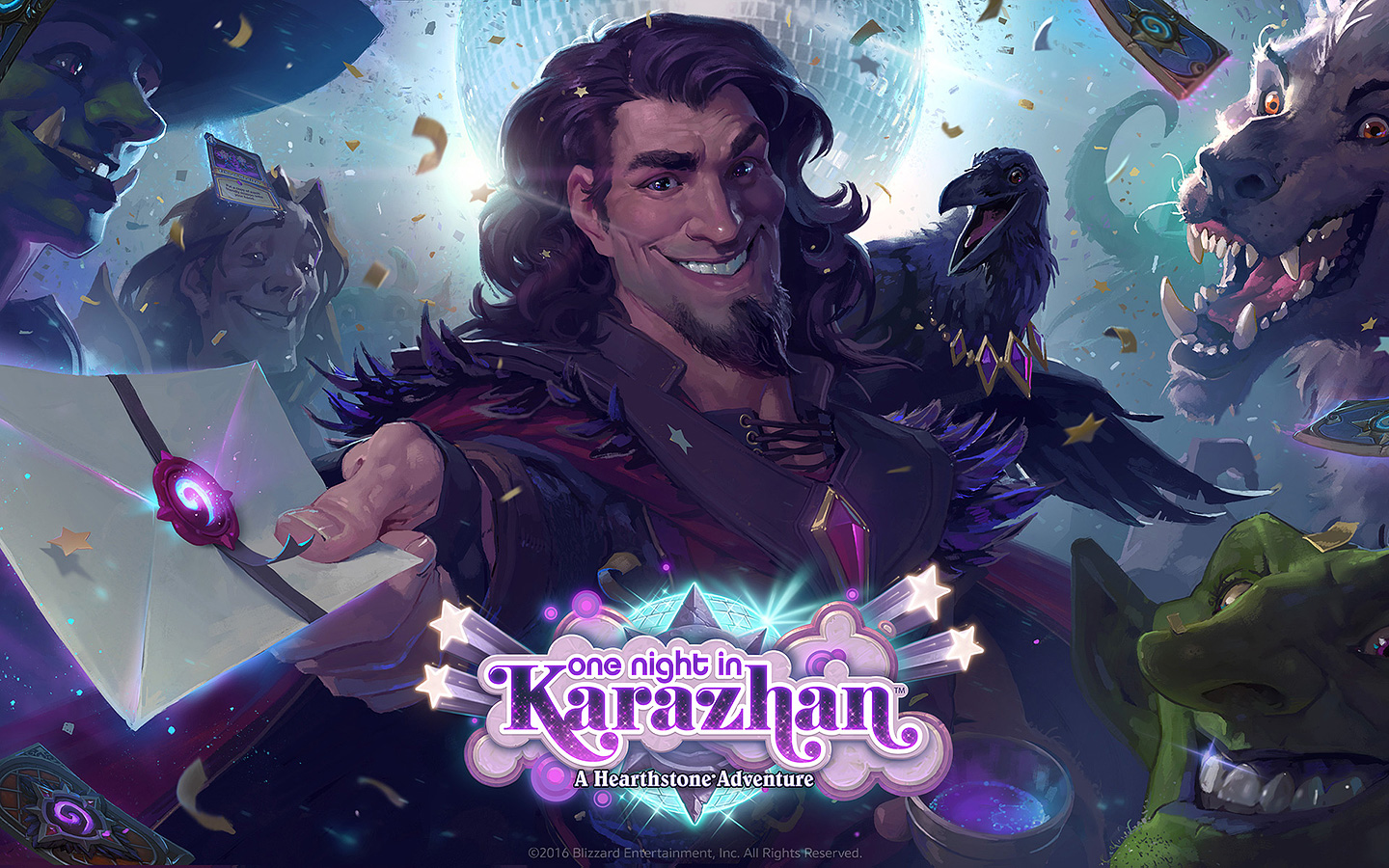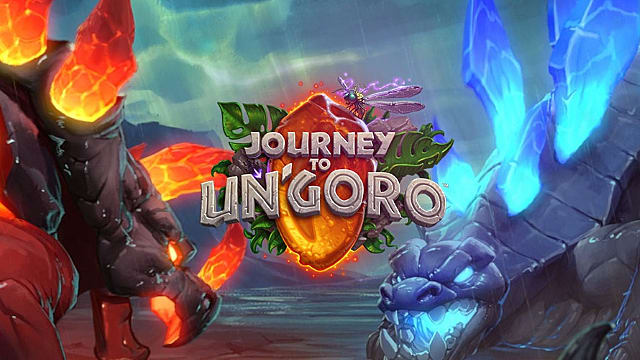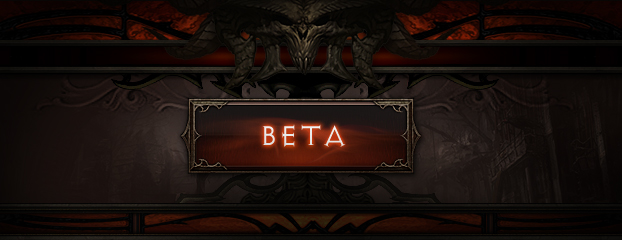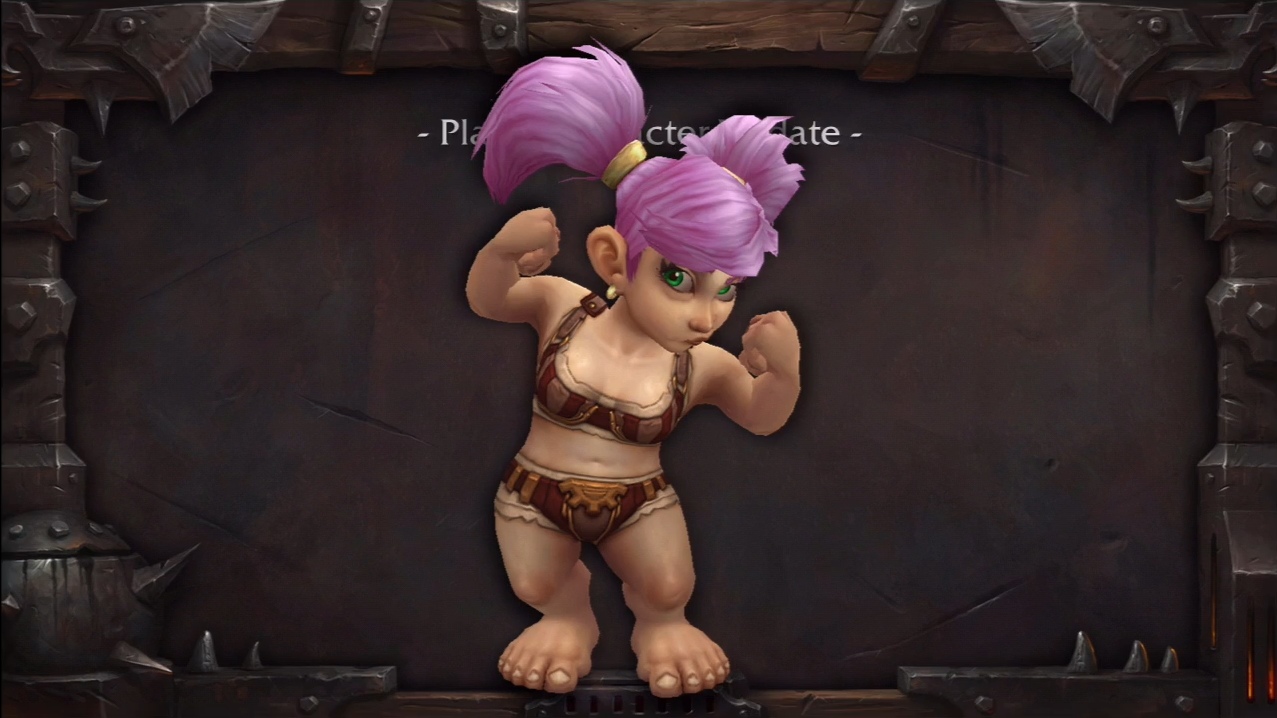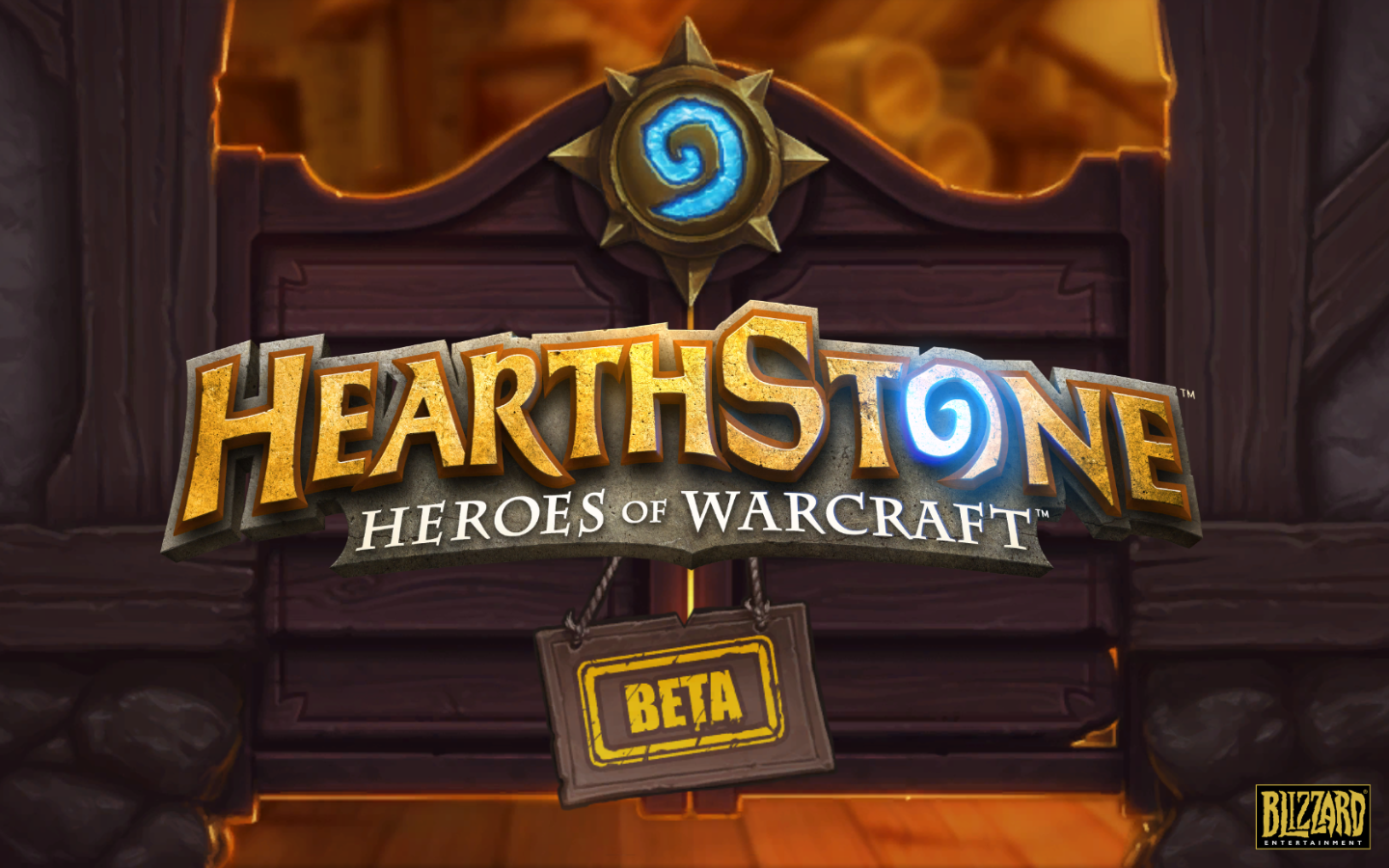
The announcement of Hearthstone: Heroes of Warcraft came as something of a surprise to those of us who like to keep our eyes on Blizzard and its various goings-on. A free to play collectible card game from the company who own the most successful subscription-based MMO ever made? Surely they’re out of their minds? And it’s going to use the same Warcraft setting? Madness!
But here we are, at the beginning of the open beta for Hearthstone, with a view towards a final release later in the year. The game has been in closed beta since mid-2013, and has undergone many changes since then.
The fundamentals of Hearthstone are those of any collectible card game: collect cards, build decks, defeat opponents. Unlike, say, Yu-Gi-Oh or Magic: The Gathering, however, Hearthstone is entirely digital: there’s no printed card game that this is a conversion from. this gives it huge advantages over its rivals, especially over Magic’s abysmal digital incarnation, Duels of the Planeswalkers.
For those unfamiliar with the concept of a card game like this, it breaks down fairly easily: Before you play, you put together a deck of cards that you will then draw from during the game. Hearthstone requires exactly 30 cards in a deck, and you start with a hand of three cards drawn from this.
Each card costs mana crystals, and you gain one mana crystal each turn, up to a total of 10. Mana also refills on each turn, meaning that spending 6 mana one turn won’t leave you with only one mana on the following turn. The goal of the game is to play cards in order to attack your opponent’s hero, reducing their health from 30 to 0 before they can do the same to you. Success relies partially on how good you are at building decks, and also on how lucky you are in terms of getting the right cards into your hand at the right time.
According to Blizzard, players who go first in Hearthstone gain a very slight advantage, due to being able to play higher cost minions earlier than their opponent. To mitigate this, the player going second gets two extra cards, one of which is the Coin card, which allows that player to gain an extra mana crystal for one turn only. This keeps things relatively well-balanced, and mitigates (but does not entirely eliminate) the advantage of going first.
There are two primary modes of play. The first is play mode, which offers ranked and casual play. Ranked play pits you against similarly ranked opponents, and winning allows you to increase your rank. This is pretty much the “pure” form of Hearthstone, intended to be where you’ll spend most of your play time. Casual allows you to play without risking your rank on some kind of wildly experimental deck, or give you the option of learning the ropes before you start ranking up.
The other mode is Arena. Arena mode is a “draft” mode, where you build a deck from a pseudorandomly-chosen selection of cards taken from all the cards in the game (you’re not limited by the cards you have unlocked so far). Each card can be picked from a selection of three cards, and while the selection is intended to be random, there are mechanics in place to ensure that you wind up with a good variety of cards. While it’s definitely possible to be unlucky with the cards the game offers you, you’ll still generally have something you can work with, even if it’s not what you planned.
The downside to Arena is that it costs US$2 of real money or 150 in-game gold to play each time. Gold can be earned by completing daily quests, winning ranked matches, and, perhaps surprisingly, winning in the arena. It’s entirely possible to win as much gold in the Arena (if you’re good) as you spent, which seems counter-intuitive, but you do have to play really well to achieve this. Your Arena run ends when you either win 9 games, or lose three games. The reward for winning arena is dependent on how many games you win. You are guaranteed, even if you lose three games without winning any, to unlock a booster pack of five cards, and it’s this reward that makes Arena the most efficient way to unlock cards, as a booster pack runs you 100 gold in the store, and you can often make more than the 50 gold difference between that and the cost of running Arena.
Aside from winning in Arena or ranked play, you can also earn gold by completing quests, which generally involve either winning a certain number of games with a certain class, or by playing a certain number of specific cards. Quests provide a good way of giving you a goal within a specific play session (“Do I want to win five games as a Priest or as a Mage?”), allowing for a somewhat more structured play session than you might normally get. There are also plans for an adventure mode to be added to the game before release.
There are nine classes in Hearthstone, and World of Warcraft players will be familiar with all of them, as they’re the nine original classes from that game. Each class has a specific hero ability that costs two mana but isn’t a card (so can be played at any time you have two mana available), and a set of cards specific to that class. These class cards are what gives each class its specific flavour. Mages, for example, have a lot of cards that deal direct damage or provide powerful control options (Fireball for the former, polymorph and several ice-based cards for the latter), while rogues have cards based around combos (playing multiple cards in a turn) that increase a card’s power. Warlocks get cards that are based around sacrificing other cards for more power, especially in the early game, while Warriors use cards to buff their minions so they can hit faster and harder with each turn.
Druids are built around cards that have multiple choices, so, for example, one card can be either a hard-hitting minion or a high-health tank. Paladins are built around being able to buff and protect minions, allowing them to turn weak minions (such as the one they can summon as a hero ability) into hard-hitting monsters. Hunters have the ability to buff beasts, allowing them to turn what would seem to be weak cards into powerful minions. Finally, Priests have a lot of what’s known in the Hearthstone community as “total bullshit”, with their ability to mind-control powerful minions, buff them to all hell and turn them on you.
Right now, there are some balance issues with regards to classes and their specific cards. Mages are considered perhaps a little too strong, while Paladins and Warlocks can be a little weak. On the other hand this is a Blizzard game, and balance is their trademark. There’s a reason their games are perennial tournament fixtures, after all. When they do make balance changes, the company always compensates players (recently by increasing the disenchant value of some cards) and makes sure they understand why the changes were made.
By keeping the rules of the game relatively simple, Blizzard have made Hearthstone extremely accessible, without compromising high-level play. The metagame will prove to be the most important aspect of Hearthstone, and Blizzard fully understand how to keep it growing and developing without interfering unnecessarily. Even better, the game, though free to play, doesn’t require you to invest large sums of money into it just to be successful. While there’ll certainly be a core group of players that does do this, the vast majority of players won’t need to, especially given the feedback loop that comes from doing well in the Arena.
There’s no question, now, that Hearthstone will be a major success for Blizzard. That it’s been taken up with enthusiasm by the online streaming and pro gaming community suggests that it’s going to be yet another Blizzard game with a long future in front of it. Now that it’s in open beta, and everyone can have a go at it without any cost whatsoever (even your first Arena run is free), I fully expect this game to become the year’s biggest sleeper hit, building momentum as more and more people install it. And that’s before the planned iPad version shows up, putting the game in front of a much larger audience that will happily eat up its free-to-play nature.
But you don’t have to read this to find out whether or not Hearthstone is a game you’ll like. Just go and download it and find out for yourself. I’ll see you in the Arena.

